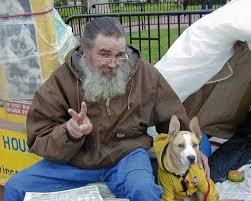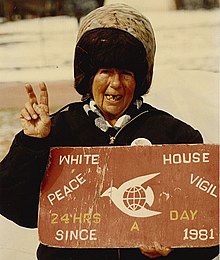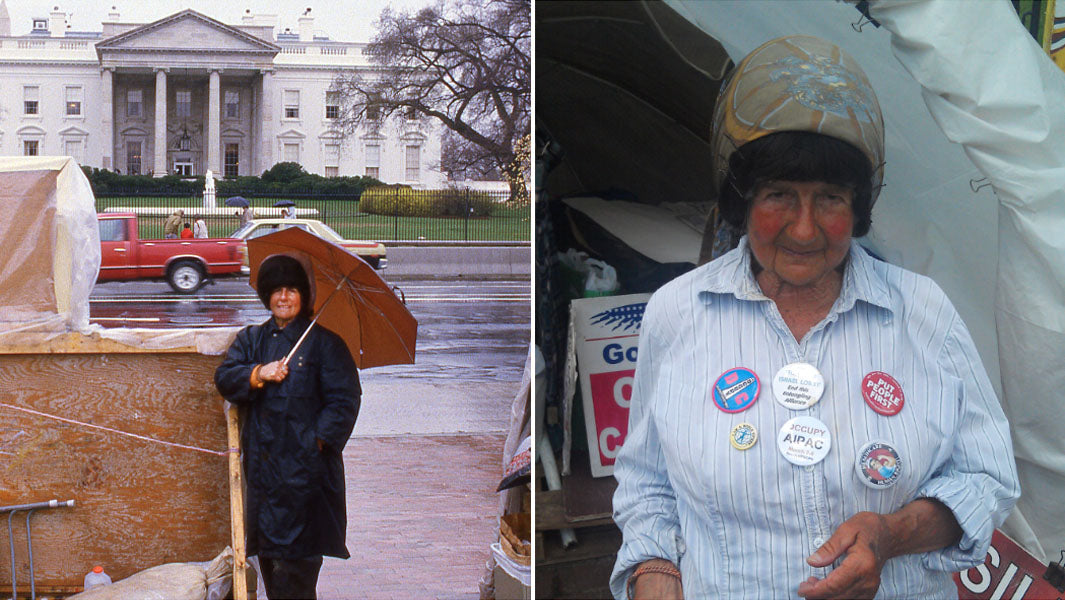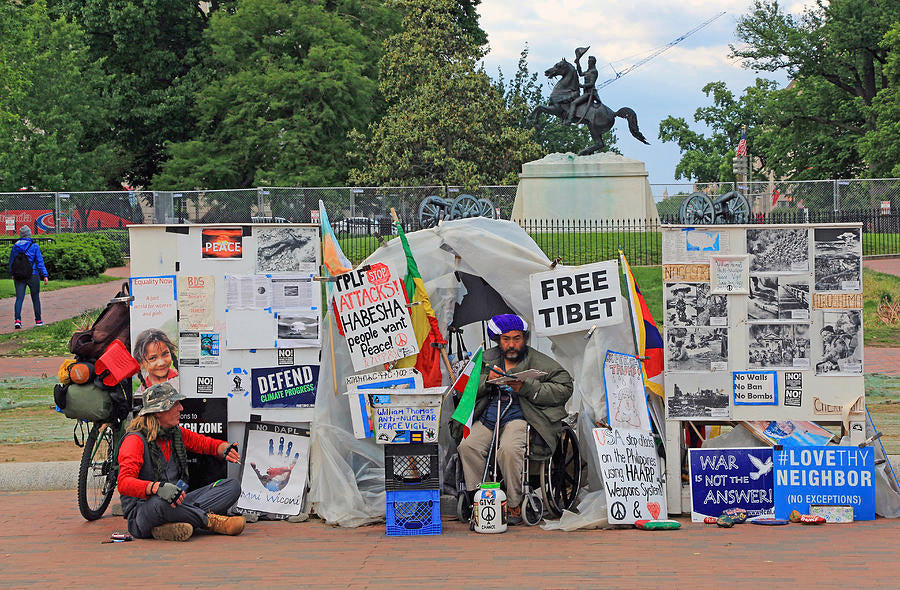Connie Picciotto - American Hero
The Enduring Legacy of Connie Picciotto and the White House Peace Vigil
For over three decades, Concepción "Connie" Picciotto stood as a tireless advocate for peace, camping in Lafayette Square across from the White House in Washington, D.C. Her protest against nuclear proliferation became the longest-running peace vigil by an individual in history, spanning 34 years and 177 days, from August 1, 1981, until her passing on January 25, 2016.
Though Connie holds the record, the White House Peace Vigil was originally initiated by American anti-nuclear activist William Thomas on June 3, 1981. Thomas maintained his vigil for 27 years and 234 days until his death on January 23, 2009. Together, they became symbols of unwavering dedication, keeping the message of peace alive through decades of political change, legal battles, and personal hardships.
A Life Transformed by Activism
Connie, originally from Spain, moved to the United States in 1960 and worked as an embassy secretary in New York. Her life took an unexpected turn when she traveled to Washington, D.C., seeking official assistance in resolving a personal dispute with her husband, whom she accused of organizing an illegal adoption and conspiring to have her institutionalized.
During her time in Washington, she encountered William Thomas and his vigil for world peace. Moved by his dedication, Connie sat beside him—and within hours, they were both arrested for illegal camping. Undeterred, they decided to join forces, dedicating their lives to the anti-nuclear cause.
With camping banned in Lafayette Square, the duo operated from a makeshift shelter consisting of a patio umbrella draped in plastic. They endured extreme weather conditions, police confrontations, and multiple arrests but remained steadfast in their mission. They relied on donations from passersby, local charities, and businesses—such as a nearby Hardee’s, which provided them with leftover food. Volunteers occasionally stepped in to give them brief respites, though this sometimes led to issues. In 2013, a volunteer left the vigil unattended overnight, prompting authorities to dismantle the encampment. However, Connie and her supporters quickly reinstated the vigil within hours.
An Unbreakable Commitment to Peace
In 1984, their movement grew when Ellen Benjamin, a former professional, joined the cause. She quit her job and married Thomas just six weeks after meeting him. However, her presence led to tensions, as Connie disapproved of the relationship and remained hostile toward Ellen. Despite their differences, the trio continued the vigil, enduring repeated arrests and legal challenges. On one occasion, Thomas and Ellen were sentenced to 90 days in jail for violating National Park Service rules, leaving Connie to maintain the vigil alone.
Their perseverance bore fruit in 1993 when they successfully circulated a petition advocating nuclear disarmament, leading to a ballot initiative. Eleanor Holmes Norton, Washington D.C.'s congressional delegate at the time, worked with them to draft a nuclear disarmament and conversion act, though it never reached Congress for a vote. Still, Norton acknowledged the activists' contributions, stating, “Everybody who protests in this country understands how incremental change is, and if you’re not going to stick to it, it’s not going to happen. Maybe you can’t keep a movement going, but you can keep an issue alive.”
A Legacy That Lives On
Connie passed away in 2016 at a housing facility operated by N Street Village, a nonprofit supporting homeless women in Washington. Though she is gone, her legacy remains. The White House Peace Vigil marked its 40th anniversary in 2021 and continues to stand as a symbol of resilience, activism, and the pursuit of peace.
Longtime supporter Michael Beer emphasized the vigil’s evolving significance, stating, “This vigil has grown to include the causes of peace because you can’t get rid of nuclear weapons easily unless we get rid of war. We can’t get rid of war unless we talk about human rights, and so this vigil has taken on human rights around the world.”
The White House Peace Vigil remains a powerful reminder that even in an age of digital activism, the presence of individuals who dedicate their lives to a cause can leave an indelible mark on history.




